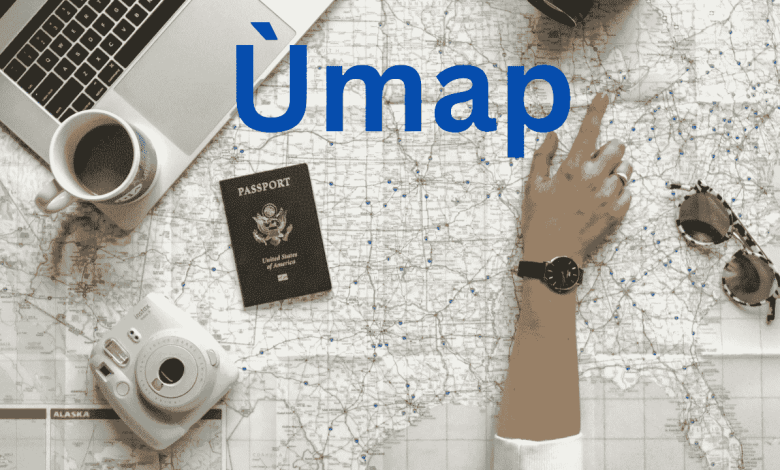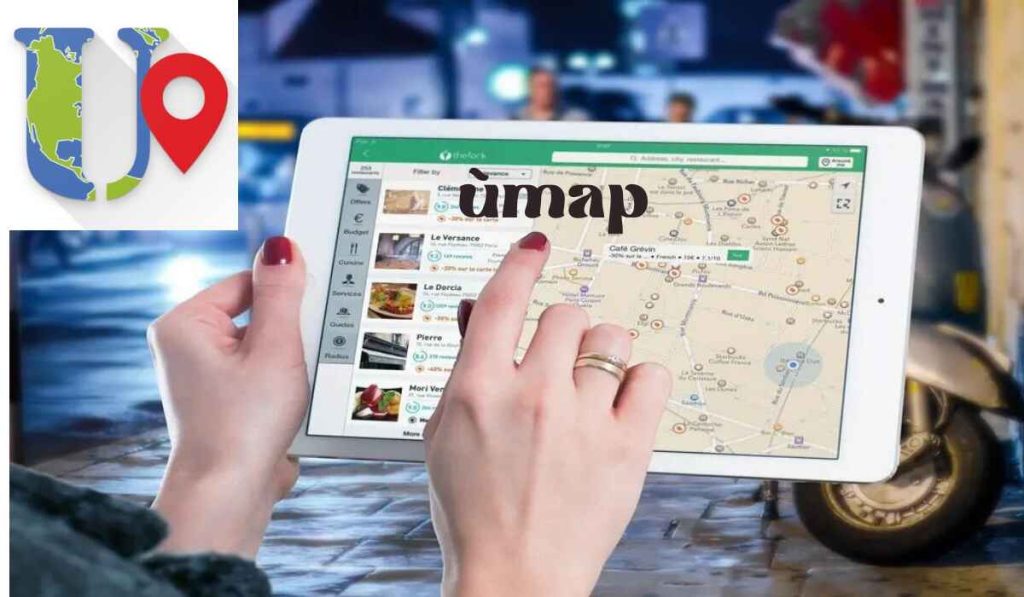Ùmap: How to Find Your Way Around the World (Map)

Introduction
What does the word “ùmap” mean?
A ùmap is a picture of how things are connected in space, whether a picture of a place, an idea, or the connections between things. It helps us figure out how the world around us is laid out and gives us a sense of what’s happening around us.
A look into the history of “ùmap.”
In old times, people used simple drawings to find their way around, which is where the idea of mapping comes from. However, maps didn’t start to look like the ones we know today until the Middle Ages when mapping became popular. From Ptolemy’s world maps to the Age of Exploration, maps changed as people learned more about and explored the world.
Types of maps: looking at the different kinds
Physical maps: what they are and how they can be used
Physical maps, like old-fashioned paper maps or relief maps, show regional features in a way that you can touch. People often use them outside, like hiking or camping, because they’re a trusted guide when digital ones aren’t available.
An Overview of Digital Maps and Their Uses
Digital maps, on the other hand, use technology to create dynamic and engaging experiences with tech. Digital maps, like GPS guidance systems in cars and mapping apps like Google Maps on phones, have changed how we get around cities and plan our trips.
Maps of ideas
Figuring out what its goal is
Conceptual maps, also called mind maps or brainstorming images, help you see how ideas or concepts are connected. They’re often used in work and school to keep track of ideas, plan projects, and find solutions.
How important it is in today’s world
How maps are used in daily life

In today’s connected world, maps are very important in many areas of life. They have become very useful for everyone, whether they’re looking for the fastest way to get to work, studying demographic data for urban planning, or analyzing huge amounts of data to make decisions.
How are ùmap made?
The whole process, from the beginning to the end
Several separate steps must be taken for the end map to be accurate and useful.
Data Collection: Getting the correct data
Gathering information, such as GPS coordinates, survey results, or just thoughts, is the first step in making a map. This information is what the map is built on.
A Study
Putting together collected info
After the data is gathered, it is examined to find patterns, trends, and connections. This research helps decide how the data will be shown on the map and ensures that it is correct and useful.
Design: Making the end item
Lastly, the map is designed, with size, color, and layout being some of the things that are thought about to make a clear and appealing representation. Design is essential regarding how people use and understand a map, whether paper or digital.
How ùmap are used in real life
The fact that ùmap can be used in many different areas shows their flexibility.
Navigation: Getting people where they need to go
Navigation apps like Google Maps and Waze have changed how we get around cities by showing us real-time traffic conditions, other paths, and exciting places to visit.
Planning Cities
Making towns better places to live
Maps help urban planners make smart choices about city infrastructure, transportation networks, and zoning laws by showing them how people live, travel, and use land.
Education: Making learning more enjoyable
Teachers use conceptual maps to help students understand difficult ideas, start conversations, and develop critical thinking skills.
Problems and Trends for the Future
Maps have come a long way, but they still have problems to solve and opportunities to improve in the future.
How accurate
Trying to be great
One of the hardest things about maps is ensuring their accuracy, especially in places where information is constantly changing.
Concerns About Privacy
Getting knowledge and privacy rights
As maps gather more information about where people go and what they do, privacy worries have grown, leading to data security and consent inquiries.
Addition to Reality
Using new tools together
Augmented reality (AR) is becoming more popular, which opens up exciting possibilities for the future of maps. AR offers immersive experiences that blend the real and digital worlds without problems.
A summary of why maps are essential and what the future holds for them
Lastly, maps have become very important for finding our way around the world, both in the real world and our minds. Maps give us the courage to explore, understand, and navigate our surroundings by showing us the way through unfamiliar areas and making complicated ideas easier to picture.






s7sjxc